It took years to learn how to catch the grass carp (White Amur) from the ponds and lakes in the Phoenix, Arizona area consistently. Grassies are undoubtedly the most difficult of all carp to catch on the fly and in fact one of the hardest of all freshwater fish species to fool with a fly. But after years of trial and error I know where to find them, much about their behavior and what flies work best for them. But that’s in stillwater. Today Cinda and Steve took me grass carp fishing on the flowing water of the canals.
The canal systems of the Phoenix area are complex. They house plenty of fish from largemouth bass to carp and as long as you have a license you can fish in most of them. The ones closed to fishing are well marked or in the case of CAP canals, even gated. But the rest are part of an intricate manmade river system quite unique to a guy like me from Victor, Idaho.
The canals on today’s agenda were very close to Steve’s apartment. Steve lives in Mesa, AZ and I’ll bet we drove less than ten minutes to get to this one. I’d love to tell you more about where we were, but after a couple turns and more than three traffic lights this place all looks the same around here – fast food and shopping malls over and over and over again.
Laugh as you will, but despite being far from the wilderness where I am most at home, I get as excited about the grass carp fishing around here as I might some exotic fishing 5,000 miles from home. Steve thinks that’s particularly crazy but I can’t help it, grassies are difficult to catch and I love the challenge. For me, as long as I see fish I’m happy and in the waters around here you see grass carp everywhere. It’s my job to catch them. If I can’t, than it means I have more to learn which for me is very, very, very exciting.
Once parked down some remote alley (no bears to worry about for a change) I jumped out of the truck grabbed my rod and walked up a short dirt trail, crossed a bicycle path and on to the cement of the canal. Like standing on the banks of a trout river I’ve never fished before, I stared upstream for a minute then down. This was different though, both views looked about the same. Both directions of the canal were nearly perfectly straight, the current speed was exactly the same everywhere, the water was slightly colored and there was absolutely no structure at all. “How and the hell do you fish this?” I mumbled to myself.
I was really baffled. I didn’t even know what fly to go with. Normally I fish grass carp with dry flies resembling grass. While some anglers sport some pretty fancy grass flies, I have had great success with green, chartreuse and olive foam grass hopper patterns. But conditions looked wrong for dry flies.
As I stood and gazed with my wheels turning frantically a ghost appeared below me. Then another and another. A school of grassies were passing along the bottom of the canal. I could just barely make them out in the off-color water. Man! I froze like a nearby electrical post until they finished passing. There were hundreds. This place was crawling with carp. After seeing them hugging the bottom as they passed, I rigged up one of my olive grand hoppers and dropped one of my friend Vladi’s special Polish nymphs below the big dry and started walking it downstream.
By now, Steve and Cinda were with me. Both were rigged similarly so I figured I was on the right track. However it was about then they confessed to never fishing the canal before. They knew of this place because they biked along it and saw grass carp but truly hadn’t fished it. Then they went on to tell me downstream was where the rising grassies hung out.
We fished our way all the way to the rising grass carp spot. That meant about a mile of walking; crossing a few bridges and dodging speedy cars on a major roadway that made me feel like the frog in Frogger. All along the way we slung our nymphs over many grass carp as well as some commons and some of the local chub and sucker populations. Not one fish specie made an effort to swerve to my nymph. The only action was when a koi rose to my hopper but only nudged it with his nose.
 It was obvious when we got to the good water. I looked downstream of the canal and began to see snouts breaking the surface. They were grass carp snouts and they were feeding gently. I grabbed my camera and Cinda snuck below them and then crept into position to cast to them from below. The situation looked easy. Just toss a dry up to them and they’d munch it right? Not! These are grass carp, one of the spookiest of all freshwater fish. Although they tolerate passing bikes, fast walkers and construction trucks, the raising of your casting arm 50 feet away puts them down instantly. After Cinda’s first cast it was game over – ten rising grass carp vanished.
It was obvious when we got to the good water. I looked downstream of the canal and began to see snouts breaking the surface. They were grass carp snouts and they were feeding gently. I grabbed my camera and Cinda snuck below them and then crept into position to cast to them from below. The situation looked easy. Just toss a dry up to them and they’d munch it right? Not! These are grass carp, one of the spookiest of all freshwater fish. Although they tolerate passing bikes, fast walkers and construction trucks, the raising of your casting arm 50 feet away puts them down instantly. After Cinda’s first cast it was game over – ten rising grass carp vanished.
“Yikes” was the word. These guys were going to be nastily tough. The next group of risers was just below a wooden bridge. Now it was my turn. Instead of casting from below, I opted to cut off my dropper nymph and feed only my hopper to the grassies. And about 100 feet above them I made a short cast to get started – bad move. These ones saw my cast from 100 feet away and bolted. Grass carp can be tough but this was ridiculous!
That pretty much sums up day one. While Steve was smart enough to kick back, relax and watch, Cinda and I fished relentlessly till dark. We were brutalized by the grassies. I spooked more fish today than I have in my entire life. Schools of carp ran from me and as they ran they spooked the next school and the next and the next. It was the most extreme domino effect of spooking fish I’ve ever seen. Yet remarkably both Cinda and I would end up hooking a fish.
During the afternoon I focused on another group of risers and instead of setting up on them from a 100 feet away, I set up on them some 200 feet upstream. Then I shook out over 70 feet of fly line and crawled down the edge of the canal following my drifting fly. I wasn’t taking any chances of them seeing me or my rod. And by miracle my system worked. I had three grass carp consume my hopper. The bad news however, is that the take of a grass carp and the shape and location of their mouths is not made for a downstream hook set. I watched my fly disappear into the mouth of all three yet when I lifted and set on the first two, my fly, leader and line flew right back in my face. It was so frustrating!
But on the last one, I lucked out. I had at least 70 feet of line between me and the fish. Some of the line wasn’t tight and I know my leader was bunched up. I set with all my might and in addition to a strong set I jumped to my feet and ran backwards. When I felt meat I screamed with joy and Steve ran down to me and grabbed my camera. The grassie jumped immediately then ran me up and down the canal for about three minutes. It was great fight and finally he was tiring. Then as fast as he was hooked, I lost him. I think I played with him a little too much trying to get some cool pics. No big deal I thought, I’d get another. But another never happened. Today was a lesson on grass carp of the canals of Arizona. They are tough – real tough. Yet despite the ass kicking, today’s learning experience was a magnificent day of fishing.
Cinda and I fished as hard as we could. I tried every trick in my book and I’m sure Cinda did too. And we got still got skunked. I can’t think of many fish where the same effort towards the same number of seen fish could end in a skunk. Today was absolutely awesome and it’s going to be hard to sleep tonight. Not because I’m derailed. Not at all. But because I’m pumped to try and solve the grass carp of the canal puzzle tomorrow. Good stuff!

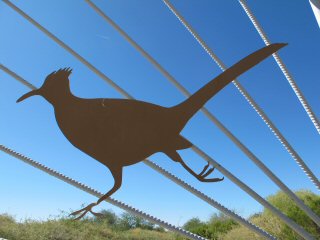
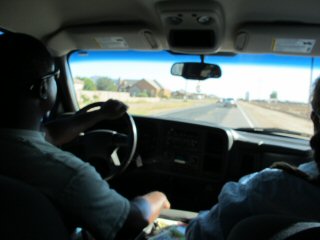
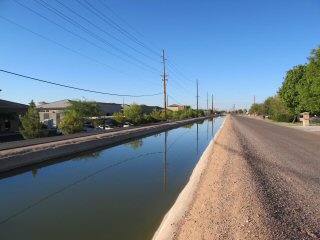
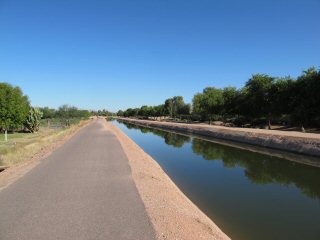
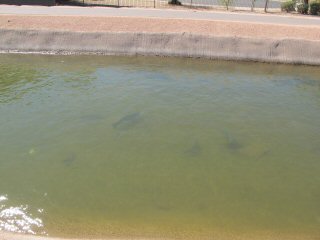
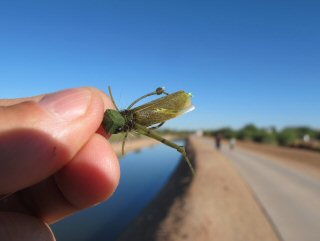
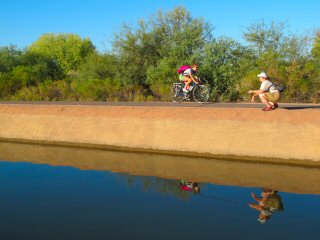
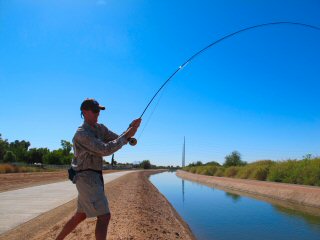
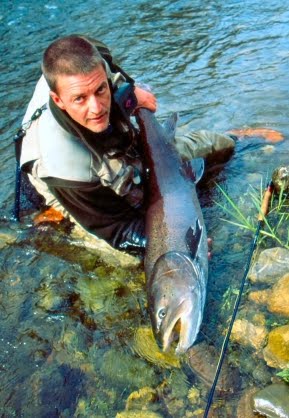
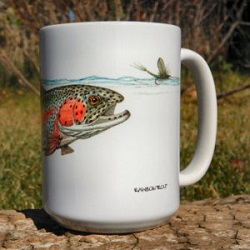









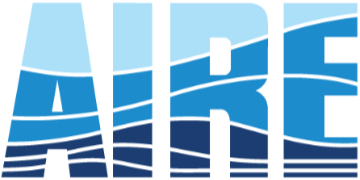

You have to love getting whipped with little success. During the moment it is dreadful, but after the fact the idea of going back for another try at these fish will consume you. Good times